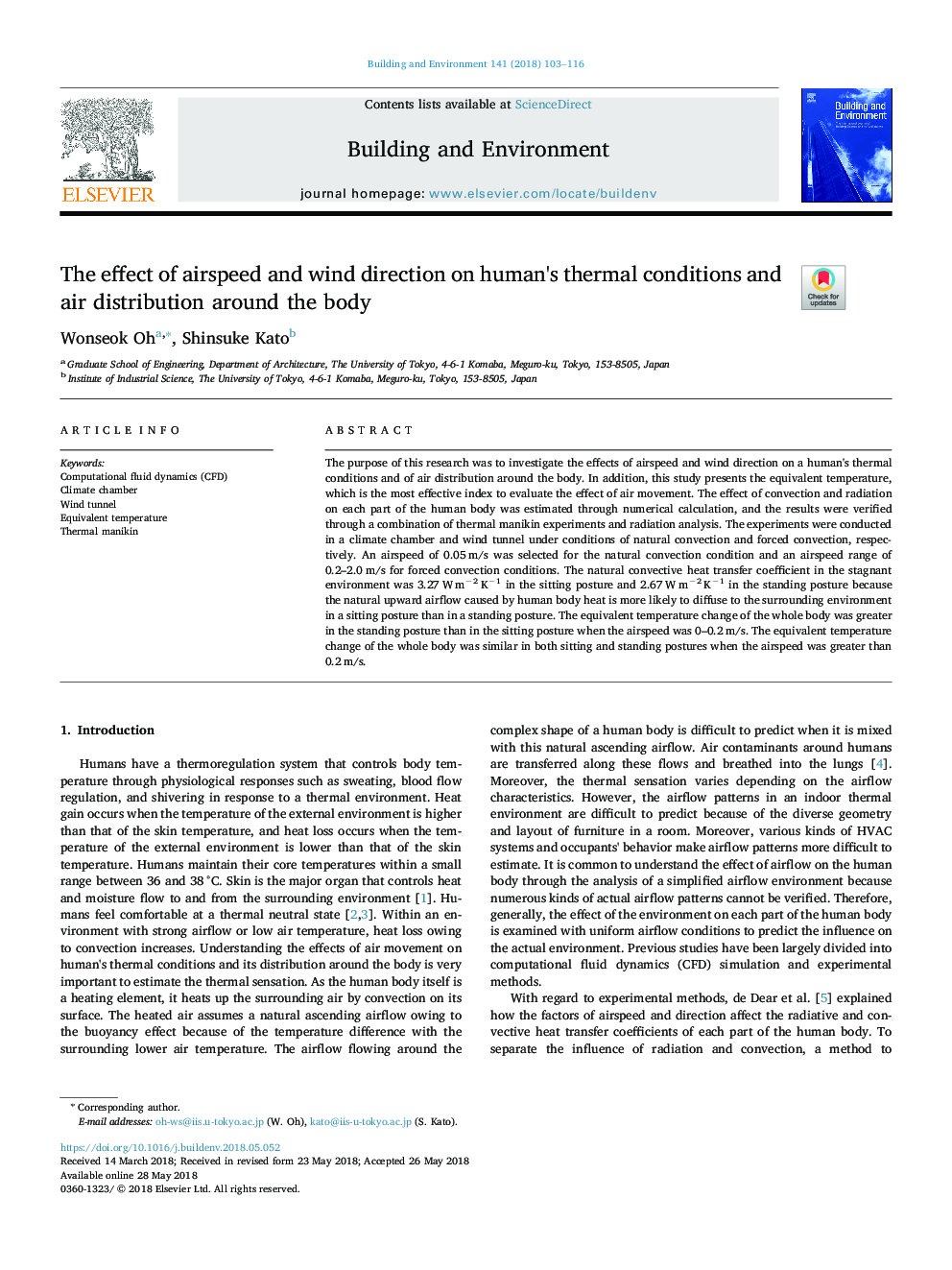| Article ID | Journal | Published Year | Pages | File Type |
|---|---|---|---|---|
| 6696928 | Building and Environment | 2018 | 14 Pages |
Abstract
The purpose of this research was to investigate the effects of airspeed and wind direction on a human's thermal conditions and of air distribution around the body. In addition, this study presents the equivalent temperature, which is the most effective index to evaluate the effect of air movement. The effect of convection and radiation on each part of the human body was estimated through numerical calculation, and the results were verified through a combination of thermal manikin experiments and radiation analysis. The experiments were conducted in a climate chamber and wind tunnel under conditions of natural convection and forced convection, respectively. An airspeed of 0.05â¯m/s was selected for the natural convection condition and an airspeed range of 0.2-2.0â¯m/s for forced convection conditions. The natural convective heat transfer coefficient in the stagnant environment was 3.27â¯Wâ¯mâ2â¯Kâ1 in the sitting posture and 2.67â¯Wâ¯mâ2â¯Kâ1 in the standing posture because the natural upward airflow caused by human body heat is more likely to diffuse to the surrounding environment in a sitting posture than in a standing posture. The equivalent temperature change of the whole body was greater in the standing posture than in the sitting posture when the airspeed was 0-0.2â¯m/s. The equivalent temperature change of the whole body was similar in both sitting and standing postures when the airspeed was greater than 0.2â¯m/s.
Keywords
Related Topics
Physical Sciences and Engineering
Energy
Renewable Energy, Sustainability and the Environment
Authors
Wonseok Oh, Shinsuke Kato,
